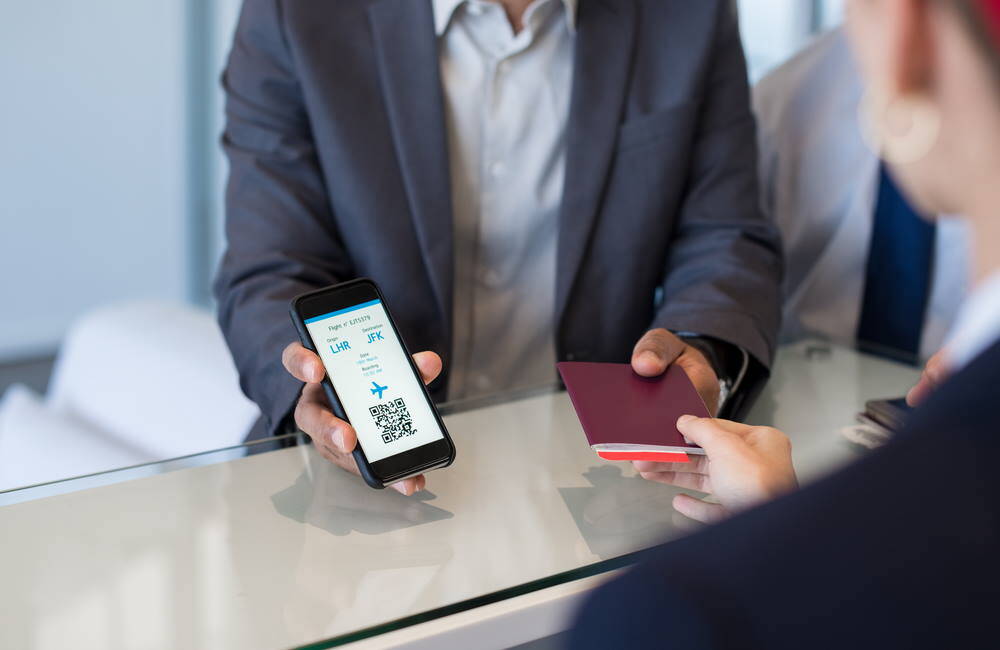
The TSA Notification Card allows travelers with disabilities to notify security officials of any issues that may impact a security screening. For disabled travelers, it’s important to know what the card does, how to get it and when to use it.
The following looks at those issues. This information can help travelers with disabilities in understanding how to use the TSA Notification Card to make travel less difficult for them.
Download The Card Here From TSA.gov
What It Does
The TSA Notification Card allows travelers with disabilities to discreetly inform airport security personnel about any medical conditions, disabilities, medical devices on their person or medications that might impact the screening process. It does not mean that travelers with disabilities who hold the card can skip the screening process, as this is still a requirement.
However, the card easily conveys essential information to security personnel. This provides a method for better, clearer communication about the details involving your particular medical situation.
Those with both a TSA Notification Card and a TSA Pre-Check designation may not need to remove shoes, laptops, 3-1-1 liquids, belts or light jackets during screening.
How To Get It
The TSA Notification Cards are available here from the Transportation Security Administration (TSA). Interested individuals can access and personalize a downloadable PDF on the TSA’s official website. Once filled out with your specific medical information, it can be printed for use. Additionally, carrying a doctor’s note explaining your condition or the necessity of a medical device alongside the card can be beneficial.
According to the medical and disabilities page offered by TSA, the card can be used for many different situations. They include sections on:
- Medications
- Alzheimer’s, dementia, aphasia or brain injury
- Autism or intellectual disabilities
- Blind or low vision
- Deaf or hard of hearing
- Use of external medical devices
- Implants or internal medical devices
- Mobility disabilities, aids, and devices
- Prostheses, casts, slings, braces or support appliances
- Radioactive medication and materials
- Respiratory equipment
- Use of service dogs and animals
When To Use It
The TSA Notification Card should be taken to the airport and presented to a TSA official near the screening area. Again, this does not exclude you from going through screening. But it gives the security officer a quick rundown of whatever issues might come up during the screening.
This especially applies to any liquid medications or medical devices. If you do not wish to go through the screening process, airport officials may have to perform a pat-down that can include removal of shoes, belts or light jackets, according to the TSA.
They also may swab any medical equipment, mobility aids or “other external medical devices” to test for explosives.
In creating the TSA Notification Card, the government is taking steps to make travel easier for those with a disability. It’s a welcome step for those travelers with disabilities who might otherwise have a more challenging time getting through security.
Frequently Asked Questions about the TSA Notification Card
Q: How can I obtain a TSA Notification Card?
A: The TSA Notification Card can be obtained directly from the TSA. It’s available as a downloadable PDF from the TSA website, which can be personalized and printed for your use.
Q: Does this card exempt me from security screening?
A: No, the TSA Notification Card does not exempt travelers from security screening. However, it does allow for a discreet and efficient way to communicate any specific needs or conditions to TSA officers.
Q: Is there a cost associated with obtaining a TSA Notification Card?
A: No, the TSA Notification Card is available for free. You can download and print it from the TSA’s official website.
Q: Can I use the TSA Notification Card for international flights?
A: The TSA Notification Card is primarily for use within the United States and its airports. For international flights, check with the specific airline and country’s regulations.
Q: What information should I include on my TSA Notification Card?
A: The card should include information about your medical condition, disability, or medical devices that may impact the security screening process. It’s important to be clear and concise.
Q: Can family members or traveling companions also get a TSA Notification Card?
A: Yes, if they have a disability or medical condition that may affect the screening process, they can also obtain and use a TSA Notification Card.
Q: How do I present the TSA Notification Card at the airport?
A: Present the card to TSA officers at the security checkpoint. It’s a way to discreetly communicate your specific needs or conditions.
Travel Tips for Those with Disabilities or Medical Conditions
Traveling with a disability or medical condition can be challenging, but proper preparation can make your journey smoother. Here are some tips to consider:
- Plan Ahead: Ensure all necessary medications, documents, and aids are packed and easily accessible.
- Communicate Needs: Use the TSA Notification Card to discreetly inform security personnel of your condition.
- Seek Assistance: Don’t hesitate to ask for help when needed, whether from airline staff or TSA officers.
How Flying Angels Can Complement Your Travel
At Flying Angels, we understand the unique challenges faced by travelers with disabilities or medical conditions. Our services are designed to provide the support and care needed for a comfortable and safe journey. From expert medical companions to assistance with logistics, we’re here to help make your travel experience as smooth as possible. For more information on our services and how we can assist you in your travels, please visit our Services Page.

